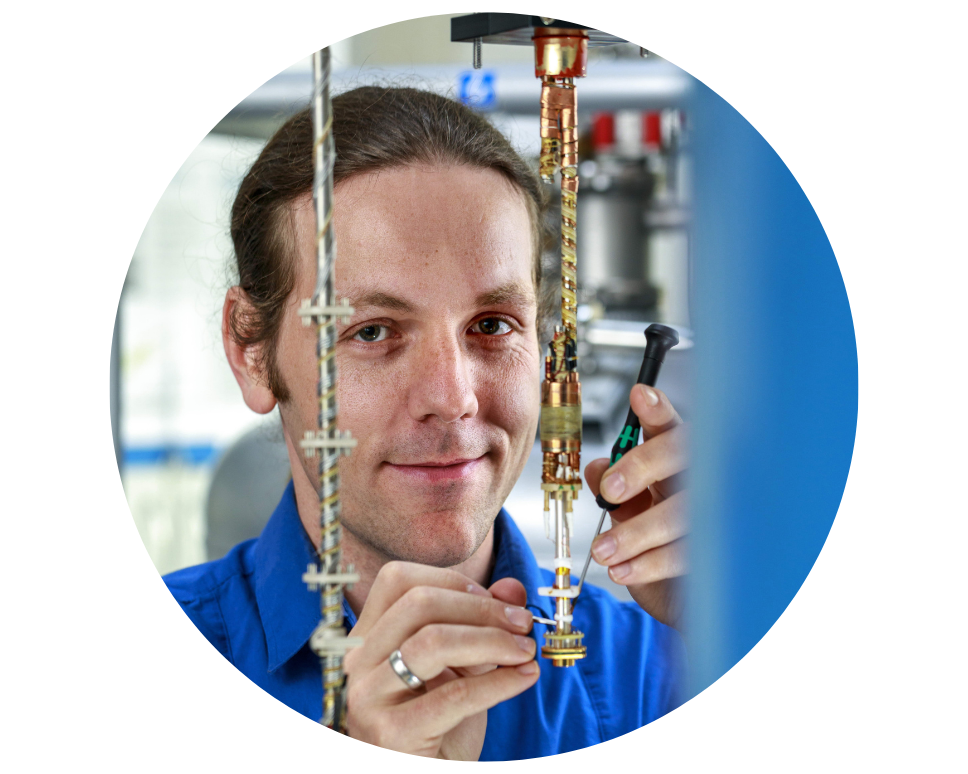Applications
 Part of the Oxford Instruments Group
Part of the Oxford Instruments Group
Expand
Collapse
With applications for the Nicholas Kurti Science Prize 2022 now closed, Oxford Instruments NanoScience speaks with last year’s winner, Dr. Tino Gottschall, Group Leader at Dresden High Magnetic Field Laboratory!
The Nicholas Kurti Science Prize is sponsored by Oxford Instruments NanoScience to promote and recognise the novel work of young scientists working with low temperatures or with high magnetic fields in Europe. We understand the critical and often difficult stage for many young scientists between completing their PhD and gaining a permanent research position. That’s why with the prize we are aiming to help individuals who are producing innovative work by offering assistance both financially and through promotion of their research work. The Prize commemorates Professor Nicholas Kurti (1908-1998), known for his distinguished work in ultra-low temperature physics at the Clarendon Laboratory, Oxford University, achieving, among many other things, the first demonstration of nuclear demagnetisation.
Dr. Tino Gottschall was awarded the Prize for his ground-breaking discoveries in the field of magnetic refrigeration. In this blog post, we find out what winning the Prize meant for Dr. Tino, the research he’s undertaking in this field and what the future holds for his research in magnetocaloric materials.
I was truly speechless to receive the 2021 Nicholas Kurti Science Prize. With magnetic materials being a field I’m truly passionate about, I have invested many years into its research and development, so receiving this award is a great honour for me. My thanks to the selection committee for choosing me and, of course, to Oxford Instruments for making this prestigious award possible for so many years now.
My work was focused on magnetocaloric materials in the field of fundamental and applied sciences. As part of a Helmholtz-RSF Joint Research Group project on magnetocaloric hydrogen liquefaction, we created the prerequisites for the first large-scale magnetic liquefier in the world.
I have a long-standing passion for research in magnetic materials. I became the co-founder of MagnoTherm Solutions in 2019 and have published literature on the magnetocaloric effect, multicaloric cooling cycle and contributed to a plethora of magnetic research. I’m honoured to be one of the most cited European scientists under the age of 35 in the field of magnetic materials.
Magnetic cooling exploits materials that exhibit a strong magnetocaloric effect, meaning the temperature of the material changes when it is exposed to a rapidly changing magnetic field. The spins in these materials are usually disordered, and only become aligned when a magnetic field is applied. Going from a disordered state to an ordered state reduces the entropy in the material. If the magnetic field is applied quickly enough, this entropy is transferred from the magnetic system to the crystal lattice. The atoms vibrate more vigorously and the temperature of the material increases. The opposite happens when the magnetic field is removed: the spins fall back into the disordered state and the material cools down.
The effects of magnetic cooling can be used to build a machine that acts as a refrigerator. The big advantage at room temperatures is that we only need water to pump the heat, which makes it much more environmentally friendly than the gaseous refrigerants typically used today. In my research, I exploit pulsed-field magnets designed and built at the HLD that can deliver field strengths of up to 100 T for short periods of time, typically a few milliseconds. To give an example, for the rare-earth element gadolinium, I measured a temperature increase of 60 K when the pulsed field reached 60 T. In the very moment the field goes back to zero, the temperature change also goes back to zero. It’s fascinating as there is no other class of materials that can do such a thing!
One of my main experimental challenges is to precisely measure the temperature of the sample within short timescales. However, I solve this by creating thermocouples as thin as 35 µm. Other material properties need to be quantified at the same time, particularly changes in length and volume that can be quite pronounced in magnetocaloric materials. I use a calorimeter based on a static 16 T superconducting magnet to record the heat capacity of the samples over a wide temperature range. Pulsed-field experiments are unique because they offer the opportunity to measure temperature changes as well as kinetic effects, but we also need static conditions to get the full picture and enable us to optimise the materials.
I want to explore the potential of magnetic cooling for the liquefaction of hydrogen which is a crucial process for storing and transporting large amounts of hydrogen fuel. The current technology is extremely energy-intensive with efficiencies of just 20–25%, which means the liquefaction process consumes almost all of the energy contained inside the hydrogen.
Magnetic refrigeration has the potential to make the process much more efficient. I’m currently applying for research grants to bolster my research even further. Publications and citations are crucial, but the people who make decisions about research funding are often not experts in the field. The recognition I’ve received from winning the Nicholas Kurti Science Prize is invaluable to propel my research forward and help to build a more sustainable future.
Author - George Pickett

Dr. Tino Gottschall